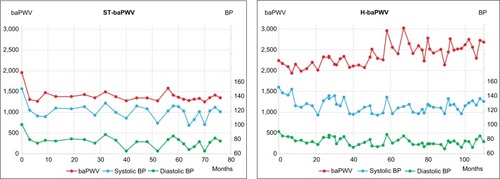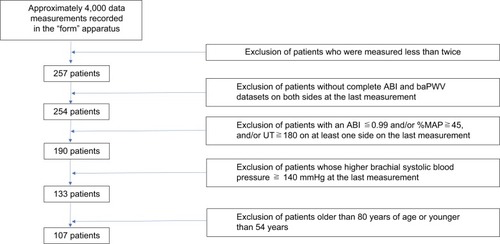Figures & data
Figure 1 Trend graphs of two typical blood pressure-controlled patients with or without improved baPWV.
Abbreviations: baPWV, brachial–ankle pulse wave velocity; BP, blood pressure; H, high; ST, standard.

Figure 2 Flow chart showing the patient selection procedure.

Table 1 Patient characteristics according to sex and baPWV category
Figure 3 The baPWV according to age and category.

Table 2 Univariate and multivariate regression analysis of factors and baPWV as a continuous variable
Table 3 Multivariate logistic regression analysis of H-baPWV determinants
